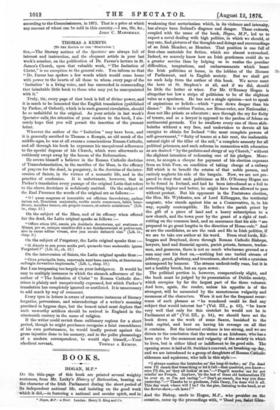INDIAN WHEAT.
[TO THR EDITOR OF THE SPECTATOR:1 SIE,—The import of wheat from India is beginning to attract public discussion in Calcutta, and is not unworthy of public attention in England, and I therefore ask permission to offer you a few remarks on the subject.
The last report of H.M.'s Commissioners of Customs for the
year ending December, 1875, furnishes us with some important information on the question. Since the repeal of the Corn Laws and the flow of supplies from abroad, wheat is found to be less remunerative than green crops and grass. The tendency of home agriculture of late years has, consequently, been to cultivate such crops as are likely to secure larger profits; and the disproportion of wheat to other crops is likely, therefore, to be progressive. During the last year, the area on which wheat was cultivated bore the proportion only of 3,514,088 acres to 43,230,696 acres under general cultivation ; and the value of it, 127,775,937 to 1260,749,969. It may form an amusing comment on the terrors of those who predicted the ruin of England on the repeal of the Corn Laws, from our being made dependent on foreign countries for our supplies of food, to state that during the last year the value of the wheat grown in this country was, on a liberal estimate, 121,823,950, and the value of wheat meal and flour imported
from abroad, £32,380,726.
These foreign supplies have been furnished chiefly by Russia and Amelica, and America is now going rapidly ahead. The latest report of the Chamber of Commerce at Odessa states that three successive bad harvests have caused an alarming falling-off in the export of grain, but even before the occurrence of the bad seasons the decline in the exports to this country was most marked. In the year 1867, fully 44 per cent, of the foreign corn imported into England came from Russia, while only 14 per cent, came from America. In 1873, the year ending with the first of the bad harvests, the American exports had taken the place of the Russian, which had fallen to 21 per cent. The American exports of corn to England had trebled in six years, while those of Russia had fallen off by one-half. The total value of the American export was 129,000,000, and that of Russia, £24,000,000. The Americans affirm that the Mississippi valley is capable of producing food enough for all Europe. The only obstacle in the way of its export is the distance from the English market, and the consequent expense of carriage. The Western corn-growing States are at a costly distance from New York, which is at present the principal channel of export ; but as the cost of carriage represents five-sixths of the price, the Americans are making strenuous efforts to reduce it, by utilising the canals and making inroads on the profits of the railways. Plans are also in progress for bringing down corn from the upper valley of the Mississippi, by removing the bar at its mouth, and building vessels especially adapted to its navigation. By these exertions they expect to be able to secure a still larger share of the supply of wheat to England.
As America has proved so formidable a rival to Russia, there can be no reason why India should not succeed in establishing a successful competition with America. The Commissioners of Customs state that "since the repeal of the export duty on corn shipped from India, we have received a comparatively large supply from that dependency, and there is every prospect of its continu- ance. The total quantity imported thence in 1875 was 1,335,000 cwt.," but it is capable of large development. The provinces of Oude and Rohilcund produce wheat enough to feed all England, and it is also cultivated in provinces further north. The prospect of a large increase of export depends in a great measure on the cost of bringing it down to the port by rail. Allyghur is the first station in the North-West, at which the Oude and Rohilcund Rail- way forms a junction with the East India Railway, 875 miles from Calcutta. Assuming the price of wheat at Allyghur to be 25 seer the rupee, and the charge of conveyance by rail to be one-fifth of a pie per maund per mile, the cost of placing a quarter of wheat on board in the harbour of Calcutta would stand thus :—Cost of the wheat, 10 rupees ; conveyance by rail, 5 rupees 4 as. ; Hooghly bridge-toll, hire of bagging, shipping charges, 1 rupee 4 as. ; total, 16 rupees 8 as. ; which, at is. 8d. the rupee, would be equiva- lent to 27s. 6d. Calculating the freight from Calcutta to London at 50s. a ton, the ton being equal to four-and-a-half.quarters, the freight would be 11s. the quarter, which would bring the wheat to an English port at 38s. 6d. Adding Is. 8d. for landing charges, the cost would be 408. a quarter, against 45s. 10d. per quarter,
according to the Commiss" loners, in 1875. That is a price at which any amount of wheat can be sold in this country.—I am, Sir, &c.,
Jon N C. MARSHMAN.































 Previous page
Previous page